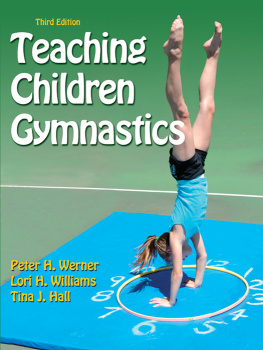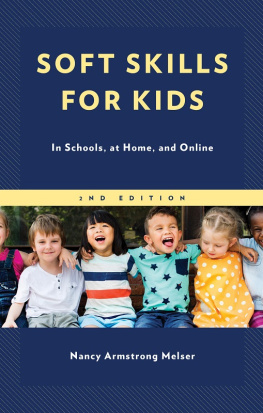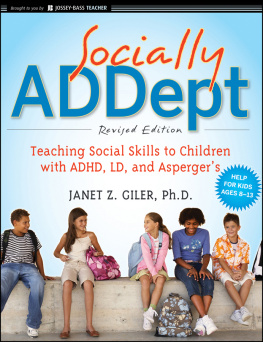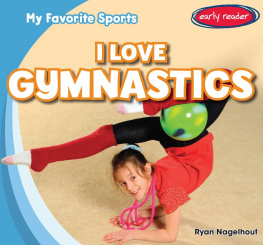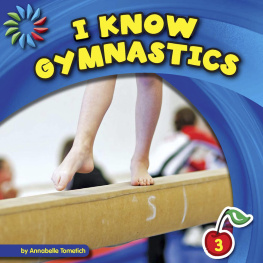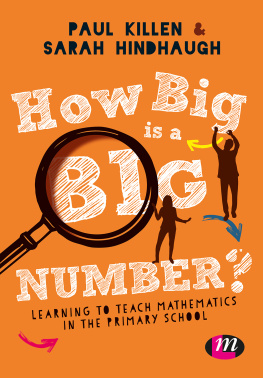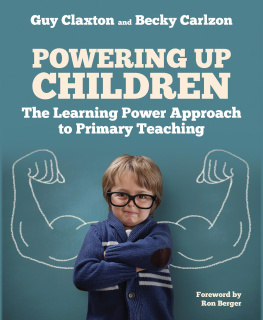Library of Congress Cataloging-in-Publication Data
Werner, Peter H.
Teaching children gymnastics / Peter H. Werner, Lori H. Williams, Tina J. Hall.
-- 3rd ed.
p. cm.
Includes bibliographical references.
ISBN-13: 978-1-4504-1092-2 (soft cover)
ISBN-10: 1-4504-1092-8 (soft cover)
1. Gymnastics for children--Coaching. I. Williams, Lori H. II. Hall, Tina J.
III. Title.
GV464.5.W47 2012
796.44083--dc23
2011028520
ISBN-10: 1-4504-1092-8
ISBN-13: 978-1-4504-1092-2
Copyright 2012 by Peter H. Werner, Lori H. Williams, Tina J. Hall
Copyright 2004, 1994 by Human Kinetics, Inc.
All rights reserved. Except for use in a review, the reproduction or utilization of this work in any form or by any electronic, mechanical, or other means, now known or hereafter invented, including xerography, photocopying, and recording, and in any information storage and retrieval system, is forbidden without the written permission of the publisher.
Notice: Permission to reproduce the following material is granted to instructors and agencies who have purchased Teaching Children Gymnastics, Third Edition: pp. 66, 67, 68, 69, 72, 73, 74, 75, 77, 78, 93, 236-237, 238, 239, 240, 241, 242, 243, 244, 245-246, and 247-248. The reproduction of other parts of this book is expressly forbidden by the above copyright notice. Persons or agencies who have not purchased Teaching Children Gymnastics, Third Edition, may not reproduce any material.
The web addresses cited in this text were current as of June 22, 2011, unless otherwise noted.
Acquisitions Editor: Scott Wikgren; Managing Editor: Amy Stahl; Assistant Editor: Rachel Brito; Copyeditor: Jan Feeney; Permissions Manager: Dalene Reeder; Graphic Designer: Joe Buck; Graphic Artist: Yvonne Griffith; Cover Designer: Keith Blomberg; Photographer (cover): Neil Bernstein; Art Manager: Kelly Hendren; Associate Art Manager: Alan L. Wilborn; Illustrations: Human Kinetics; Printer: McNaughton & Gunn, Inc.
Printed in the United States of America
10 9 8 7 6 5 4 3 2 1
The paper in this book is certified under a sustainable forestry program.
Human Kinetics
Website: www.HumanKinetics.com
United States: Human Kinetics
P.O. Box 5076
Champaign, IL 61825-5076
800-747-4457
e-mail:
Canada: Human Kinetics
475 Devonshire Road Unit 100
Windsor, ON N8Y 2L5
800-465-7301 (in Canada only)
e-mail:
Europe: Human Kinetics
107 Bradford Road
Stanningley
Leeds LS28 6AT, United Kingdom
+44 (0) 113 255 5665
e-mail:
Australia: Human Kinetics
57A Price Avenue
Lower Mitcham, South Australia 5062
08 8372 0999
e-mail:
New Zealand: Human Kinetics
P.O. Box 80
Torrens Park, South Australia 5062
0800 222 062
e-mail:
E5463
CONTENTS
Part II Teaching Developmentally Appropriate Learning Experiences in Gymnastics
PREFACE

I n my parochial elementary school, physical education was not offered. Fortunately, I was an active child. I remember swinging and sliding on playground equipment and playing sandlot baseball, football, and basketball. When I attended middle school and high school, I was excused from physical education because I was an athlete. As a result, I reached late adolescence with only a few informal gymnastics experiences. In college, as a physical education major in the early to mid-1960s, I enrolled in two gymnastics courses. One was in tumbling, and the other was in apparatus gymnastics. Because I was attending a former German Turnverein program at the University of Wisconsin at LaCrosse, both courses were presented very formally and progressively, using an Olympic system. My experiences with Dr. Gershon as my teacher were excellent and thorough. I learned good fundamental skills and good body mechanics, but I felt cheated! I didnt start gymnastics early enough or get to do it long enough to become competent in doing back handsprings, somersaults, and the likethe flashy stuff. I never really felt satisfied because I never got to put a whole routine together. We learned and were tested on single skills.
When I started teaching, I was convinced that gymnastics was good for children and that it should be an integral part of the physical education curriculum. I began to search for ways to enhance my background. I attended workshops led by Joan Tillotson, Bette Jean Logsdon, Kate Barrett, Jane Young, and Pat Tanner. I read all the British books on movement education I could get my hands on. I experienced a lot of growth in my knowledge of all the content areas of physical educationgames, dance, and gymnastics. The work of Rudolf Laban and the movement framework, including the concepts of body, space, effort, and relationships, became my main source of influence. Graduate work and a doctorate followed.
As I began teaching at the university level in the early 1970s, college curriculums started to change. With the expansion of knowledge in disciplines such as exercise physiology, kinesiology, and motor learning, content courses in skills were cut. During the 1990s and now, in the 21st century, it is not unusual for physical education majors to receive but one course in gymnastics. Often such courses earn just one credit and meet twice a week for the semester. How much gymnastics expertise can a teacher develop in one course? As a teacher, how can I give my students what they need in order to feel confident about teaching gymnastics to children?
For me, some answers emerged during two sabbatical leaves in England in 1987 and 1994. There I studied with Bob Smith of the Loughborough University of Technology. I also attended workshops on gymnastics led by John Wright from Nonington College, Martin Underwood from Exeter University, Joyce Allen from the Chelsea School of Human Movement, and Victor Sabin from the Northamptonshire education department. Although gymnastics suffers the same plight in England as in the United Statespoor teaching and lack of emphasis in the curriculumthese leaders have taken a positive stance, bringing gymnastics to its rightful place in the national curriculum.
This third edition of Teaching Children Gymnastics brings on board two new coauthors: Lori Williams and Tina Hall. Each has an extensive teaching background at the elementary and middle school levels. In addition to teaching gymnastics to children, they have conducted gymnastics workshops for teachers at state, regional, and national levels. Each also has a background in the revised national standards for physical education and assessment in physical education. Both Lori and Tina are also coauthors of the book Schoolwide Physical Activity, with Judy Rink (Human Kinetics 2010).
In a sense we have been accumulating the content of this book for over 40 years. These ideas represent our growth as teachers. They combine our knowledge of gymnastics and of teaching. These ideas combine the best facets of developmental skills, health-related fitness, and conceptual learning from the field of human movement. They represent what we think is possible to achieve in the real world with gymnastics education. In the third edition of this book, these ideas show how we have grown over the past 15 years.

